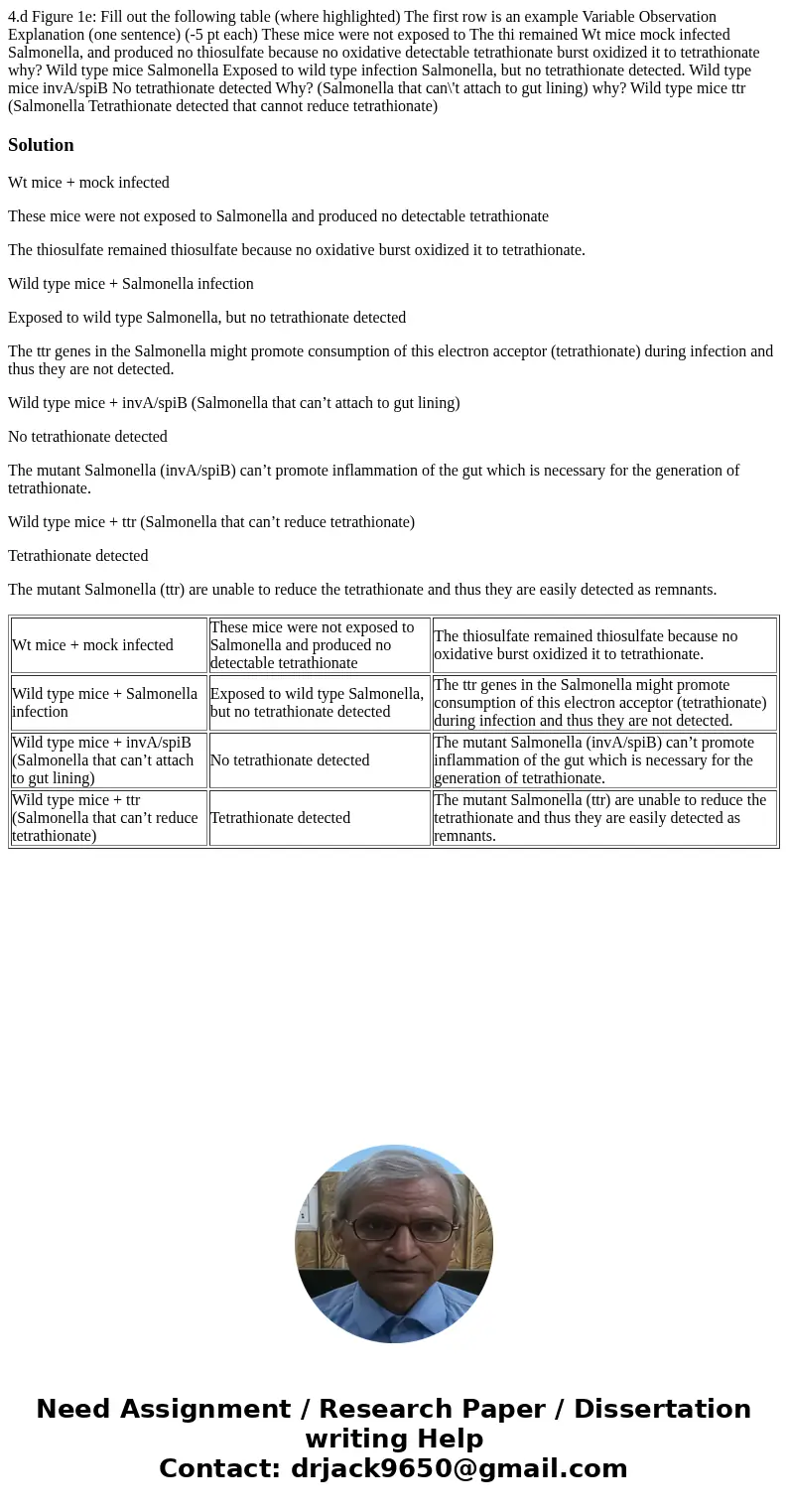4d Figure 1e Fill out the following table where highlighted
Solution
Wt mice + mock infected
These mice were not exposed to Salmonella and produced no detectable tetrathionate
The thiosulfate remained thiosulfate because no oxidative burst oxidized it to tetrathionate.
Wild type mice + Salmonella infection
Exposed to wild type Salmonella, but no tetrathionate detected
The ttr genes in the Salmonella might promote consumption of this electron acceptor (tetrathionate) during infection and thus they are not detected.
Wild type mice + invA/spiB (Salmonella that can’t attach to gut lining)
No tetrathionate detected
The mutant Salmonella (invA/spiB) can’t promote inflammation of the gut which is necessary for the generation of tetrathionate.
Wild type mice + ttr (Salmonella that can’t reduce tetrathionate)
Tetrathionate detected
The mutant Salmonella (ttr) are unable to reduce the tetrathionate and thus they are easily detected as remnants.
| Wt mice + mock infected | These mice were not exposed to Salmonella and produced no detectable tetrathionate | The thiosulfate remained thiosulfate because no oxidative burst oxidized it to tetrathionate. |
| Wild type mice + Salmonella infection | Exposed to wild type Salmonella, but no tetrathionate detected | The ttr genes in the Salmonella might promote consumption of this electron acceptor (tetrathionate) during infection and thus they are not detected. |
| Wild type mice + invA/spiB (Salmonella that can’t attach to gut lining) | No tetrathionate detected | The mutant Salmonella (invA/spiB) can’t promote inflammation of the gut which is necessary for the generation of tetrathionate. |
| Wild type mice + ttr (Salmonella that can’t reduce tetrathionate) | Tetrathionate detected | The mutant Salmonella (ttr) are unable to reduce the tetrathionate and thus they are easily detected as remnants. |

 Homework Sourse
Homework Sourse